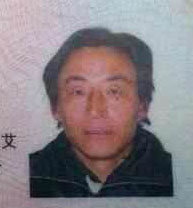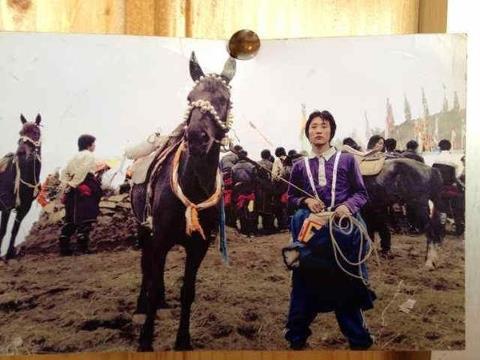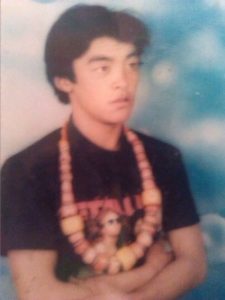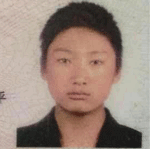
”Immolation,” Sculpture by Jud Turner, April 2012, via http://www.rangzen.net/2012/11/12/immolations-in-tibet-who-is-to-blame-for-the-stalemate/
About “Witnessing Tibet”
On December 14th, 2012, Rinchen Kyi became the 95th Tibetan to self-immolate in China since 2009. She set herself on fire in western China’s Qinghai province on December 9, at 8 p.m. local time and died of her injuries. 78 have died from their injuries. Reports of new deaths are emerging from the Tibet with depressing frequency; they occurred almost daily throughout November.
After ignoring the immolations for the first few months, the Chinese authorities have now vowed to investigate them, and to punish people suspected of inciting the protests. According to Xinhua, “Chinese police said organizing, masterminding and inciting others’ self-immolations is a serious crime of intentionally depriving others of their lives…those responsible for the brutal acts will be punished seriously in accordance with the law.”
Reports say that self-immolators have died calling for the return of the Dalai Lama, for freedom of religion, and for preservation of Tibetan culture. The self-immolations have been virtually unreported in the mainstream, international media. The Central Tibetan Administration, pro-Tibet advocacy groups and news portals, Radio Free Asia and Voice of America provide most of the reports on the latest protests.
News of the latest deaths leaves many questions unanswered. Here at The Revealer, we’re asking: Why are Tibetans taking their lives in this way? How should we respond? Does Western society misunderstand self-immolation? Is there a history of self-immolation as protest in Tibetan religion and culture? What does it mean to take one’s life in this way, to use the body in protest?
Below, you’ll find regular news updates from Tibet, as well as a number of links to information about the self-immolations, news reports, and thoughtful commentary.
The International Campaign for Tibet keeps a full record of all those who have self-immolated. You can find the list and further information about self-immolations in Tibet here.
Radio Free Asia has created a startling interactive map that shows where self-immolations have taken place across China.
Commentary:
Self-immolations in Tibet: who is to blame for stalemate? by Christophe Besuchet (Nov 12, 2012)
Beacons of resistance, not desperate acts by Christophe Besuchet (Jan 28, 2012)
Self-immolation as protest in Tibet – A Cultural Anthropology Forum (April 2012)
News Updates:
THURSDAY 6TH JANUARY, 2014
Phagmo Samdrub, a 27-year old Tibetan man and father of two, died on 5th January after setting himself on fire in Qinghai province, according to RFA and VoA.
On December 19, Tsultrim Gyatso, a 43-year old monk died after self-immolating in Amchok town, Gansu province. According to VoA he left a hand written note titled “Golden Drops of Tears”.
At the start of 2014, 126 Tibetans are known to have died by self-immolation since 2009.
WEDNESDAY 4TH DECEMBER, 2013
A 30 year old Tibetan man set himself on fire on Tuesday in Ngaba country of Sichuan province, according to reports by Phayul and Radio Free Asia. The man was named as Konchok Tseten, father of two. His condition is not known as his body was taken away by police. Tseten’s wife and bystanders who witnessed the self-immolation were arrested at the scene.
Tseten is the 124th to self-immolate in the region since 2009. In November, 20 year old Tibetan monk Tsering Gyal died of his injuries after setting himself on fire in Pema (in Chinese, Banma) county in Qinghai’s Golog (Guoluo) Tibetan Autonomous Prefecture, according to RFA.
Authorities have arrested and detained dozens of people for “anti-state” activities, or for their association with self-immolators. Nine Tibetans, including writer Tobden, were jailed yesterday in Driru (in Chinese, Biru) county in China’s Tibet Autonomous Region (TAR), according to RFA. Seven people, including three monks, were arrested following Tsering Gyal’s death in November.
TUESDAY 13th AUGUST, 2013
“When ancient writings of Sanskrit and Tibetan texts vanish during the political turmoil of the 1950s and 1960s, the history of a whole society is in danger of disappearing. Scholar E. Gene Smith devotes the remainder of his life working with Tibetan Lamas and others in rescuing these texts, culminating in a digital archive.”
Earlier this year, NYU’s Center for Religion and Media, together with the Center for Media, Culture and History presented “Digital Dharma,” (52 min., 2012), a film by Dafna Yachin.The film explores the work of the late E. Gene Smith who spent much of his life gathering Sanskrit and Tibetan texts.
The film was followed by discussion with Executive Producer Bill Harris; Laura Harrington (Religion Department, Boston University); and Robbie Barnett (Modern Tibet Studies Program, Columbia University). View the discussion here at CMCH/CRM @NYU’s Vimeo site.
WEDNESDAY 7th AUGUST, 2013
A Tibetan monk, named as 38 year old Karma Nyidhon Gyatso, set himself on fire in Nepal on August 6th. He self-immolated in the country’s capital Kathmandu, close to the Boudhanath Stupa, one of Tibetan Buddhism’s most holy shrines, according to Voice of America.
WEDNESDAY 24TH JULY, 2013
Exiled Tibetans held a mass prayer service in Dharamshala today to honor 18 year old Kunchok Sonam who died on July 20. According to Phayul, Sonam was a monk at the Thangkor Sogtsang Monastery in Zoege, eastern Tibet. He set himself on fire outside his monastery and died at the site of his protest.
Kunchok Sonam is the 121st Tibetan to self-immolate since 2009, according to the International Campaign for Tibet.
Wangchen Dolma, a Tibetan nun, died of her injuries after self-immolating on June 11,2013. She set herself on fire during a religious retreat in eastern Tibet, where more than 3000 monks were gathered to engage in debate and teaching, reports the ICT.
MONDAY 8TH JULY, 2013
An excerpt from “Letter from Dharamsala: Aflame” by Jeffrey Bartholet at The New Yorker:
On January 12th, the day that Tsering Tashi set himself on fire, he didn’t seem particularly troubled. He ate an early breakfast with his wife and his parents in the house they shared in a village near Amchok, a historically Tibetan township in China’s Gansu Province. Then he took the family herd—most of the animals were dzomos, female yak-cow hybrids prized for their milk yield—to frozen grasslands nearby. He was twenty-two years old and an accomplished horseman, and his family was well respected locally. Tashi watched the animals graze for a few hours, then went home around noon, leaving the herd in the care of friends. It was a frigid, overcast day. Tashi told his mother that he wanted to wear a traditional Tibetan cloak, or chuba. “You should wear a nice thick one,” she said. She asked if Tashi would like to join her for lunch, but he said that he needed to get back to work.
Tashi stopped to see his friends and asked if they would look after his animals a little longer. “I have to go into town,” he said. “There’s something I need to do there.” He seemed to be carrying something heavy in the folds of his chuba, but they didn’t ask what it might be.
Read more at The New Yorker.
FRIDAY 31st MAY, 2013
A rare glimpse inside Tibet, by France24 reporter Cyril Pane. Via Max Fisher at The Washington Post.
THURSDAY 30th MAY, 2013
Phayul and RFA are reporting that a 31 year old Tibetan man, Tenzin Sherab, self-immolated in Qinghai province on Monday. A monk living in southern India told RFA that he died protesting Chinese policy on Tibet. He is the 118th Tibetan to self-immolate.
A month has passed since the last protests, when two monks from Ngaba in Sichuan province self-immolated on April 24.
WEDNESDAY 27th MARCH, 2013
Weeks passed as March began with no news of self-immolations taking place in Tibet. Instead, the news was dominated by reports of arrests and prison sentences as the Chinese authorities clamped down on Tibetans ahead of the 54th Tibetan National Uprising Day on March 10. Three Tibetans were sentenced to prison terms ranging from 10 to 15 years on March 2 on charges of “intentional homicide.” On March 3, the uncle of self-immolator Dorjee Lhundup was sentenced to 15 months in jail for “illegal activities,” including carrying a photo of his dead nephew, according to Phayul. Five monks were detained as they marked the March 10 anniversary with protests. Popular Tibetan singer, Lo Lo, was imprisoned for up to 6 years on March 12 for his politically charged songs, and a monk who wrote about self-immolations in his book “Denpai Khalang” (Breath of Truth) was also detained. Arrests also took place in neighbouring Nepal, where authorities arrested 11 people for “anti-China activities on March 10 (Nepal’s Prime Minister, talking to Wen Jiabao on Chinese State Television in 2009, made clear his zero tolerance on anti-China demonstrations, stating that ““The Nepalese government… believes that Taiwan and Tibet are inalienable parts of the Chinese territory.”)
Then the news came on March 16 of the latest self-immolation. Lobsang Thokmey, a 28 year old monk at the Kirti Monastery in Eastern Tibet set himself on fire in front of his living quarters at 2.40 p.m. in the afternoon. Kirti Monastery reports that he began running while holding the Tibetan flag, before collapsing to the ground. He died later at a local hospital. His death was followed on March 17 by that of a Tibetan woman, Kunchok Wangmo, a 31 year old mother with an eight-year old daughter. Her husband was arrested following her self-immolation for “his refusal to cite internal family feuds as the reason for her self-immolation.”
On March 24, another Tibetan woman, Kal Kyi, became the 110th Tibetan to self-immolate. She died in Sichuan Province. Less than 24 hours later, Lhamo Kyab, 43, took his life by self-immolation in Gansu province.
THURSDAY 28th FEBRUARY, 2013
Protests by self-immolation have claimed the lives of three more people in eastern Tibet this week. Lhamo Dhondup, a Tibetan man in his twenties, set himself on fire on Sunday 24th February, in front of a monastery in eastern Tibet. He was followed the next day by Tsezung Kyab, 27, who self-immolated in front of the main prayer hall of Gaden Shedrup Choekhorling monastery in eastern Tibet, VOA reports. His cousin, Pema Dorjee, passed away at the same location after setting himself on fire on December 8, 2012, according to Phayul. On Tuesday, a monk at Dhiphu Monastery in eastern Tibet known as Sangdag, self-immolated on a main road in Ngaba district.
Their protests bring the total number of self-immolations in Tibet to 107 since 2009.
SATURDAY 23rd FEBRUARY, 2013
Bard College, Kingston, New York hosted a discussion event, THE FUTURE OF TIBET, featuring Lobsang Nyandak (Representative of His Holiness the Dalai Lama to the Americas), Tendor (Executive Director, Students for a Free Tibet), Robert Barnett (Director, Weatherhead East Asia Institute, Modern Tibet Studies Program, Columbia University), Robert Thurman (Tibetan Studies scholar and president of Tibet House US), Ming Xia, Professor of Political Science, City University of New York).
WEDNESDAY 20th FEBRUARY, 2013
Two Tibetan teenagers, Rinchen, 17 and Sonam Dhargyal, 18, took their own lives through self-immolation today in Ngaba Prefecture, the same day as a worldwide prayer event took place, lead from Dharamsala, to remember Tibetans who were dead or injured after self-immolating.
Here in the US, NPR’s Talk of the Nation featured a discussion about the wave of self-immolations in Tibet. Michael Biggs, lecturer in sociology, University of Oxford, Robert Barnett, director of the Modern Tibet Studies Program, Columbia University and Bhuchung Tsering, vice president for special programs, International Campaign for Tibet, participated in the discussion. In the excerpt below, Robert Barnett responds to a question from host Neal Conan on the cause behind the self-immolations. Listen to the full program, and read a transcript, here.
“Well there’s of course a long history of 60 years of rather troubled rule by China in Tibet in which the Chinese have been really rather aggressive in trying to persuade Tibetans that they are Chinese and a part of China. It hasn’t really worked. But the thing that seems to spark this in an area which had been relatively calm for some 30 years was a decision in about 1998 to ban the photographs of the Dalai Lama and quietly to ban worship of him.
This had already been done in western Tibet a few years earlier, but from ’98 they began to push this idea, this policy across the eastern areas which had been much more relaxed after the death of Mao and where people had been allowed to practice religion, at least to a considerable extent.
So a very big change there in religious policy, particularly about the Dalai Lama and a number of other issues: nomads being made to settle; language, Tibetan language being gradually withdrawn from schools; very strong controls on information and travel; these kinds of issues as well. But I think the religious question is primary.”

Tibetan father of four, Namlha Tsering, who died on 17th February after self-immolating in Gansu province
SUNDAY 17th FEBRUARY, 2013
Father of four, Namlha Tsering, died today after self-immolating in Gansu province, China. According to information received by Voice of America, his body was taken away by security forces. He was later pronounced dead.
THURSDAY 14th FEBRUARY, 2013
As a new year began in the Tibetan calendar, news emerged of two new Tibetan deaths, bringing the total number of self-immolations since 2009 to 100 (some reports say 101). As the New York Times reports, “Lobsang Namgyal, 37, formerly of Kirti Monastery, set fire to himself on Feb. 3 in front of an office of the public security bureau in a county of Sichuan Province and died on the scene, according to Free Tibet, which is based in London.” Yesterday, a Tibetan man set himself ablaze in Nepal’s capital Katmandu. He died in hospital on Wednesday evening. The man has not yet been identified, according to the Associated Press.
February 13th also marked 100 years since the 13th Dalai Lama declared Tibet’s independence, notes Phayul.com.
FRIDAY 8TH FEBRUARY, 2013
News that Chinese authorities have detained 70 Tibetans on charges of inciting others to self-immolate has been making the headlines in the international press over the last two days. As Reuters reports: “The latest detentions took place in the northwestern province of Qinghai, where police detained 70 “criminal suspects”, 12 of whom were formally arrested, meaning they will be charged, the official Xinhua news agency said.”
GlobalPost, the BBC and Guardian also reported on the detentions.
WEDNESDAY 6th FEBRUARY, 2013
China Daily newspaper and Chinese state television, CCTV, have officially accused Voice of America of encouraging self-immolations. VOA has rejected the allegations, which emerged as part of a documentary shown on CCTV on Tuesday, saying the claims are “totally absurd.”
SATURDAY 2nd FEBRUARY, 2013
The Central Tibetan Administration, Tibet’s government-in-exile, today released a White Paper outlining the reasons why close to 100 people have self-immolated across Tibet since 2009. The paper points to a ‘revolution brewing in Tibet driven by political repression, cultural assimilation, social discrimination, economic marginalisation and environmental destruction.” In short, “China’s massive policy failure in Tibet.” In the report, “Why Tibet is Burning…,” the Kashag, or governing Council, repeated its appeal for an end to the self-immolations; but as the immolations continue regardless, the kashag considers it a “sacred duty to support and amplify the aspirations of Tibetan people: the return of His Holiness the Dalai Lama to his homeland and freedom for Tibet.”
On the same day, Xinhua published its own take on the self-immolations, reporting the “Truth behind the blaze: how self-immolations affect Tibetans.” The article includes interviews and testimonies, apparently with self-immolators who survived and family members of those how didn’t, suggesting that some died to escape problems at home, or to earn the prayers of the Dalai Lama. Xinhua regularly denounces the “Dalai Lama clique” and claims that it chooses potential self-immolators based on their education and financial circumstances, although the Dalai Lama has repeatedly called for the self-immolations to stop and insists that he does not encourage such drastic action. Xinhua also points a finger of blame at Voice of America, implying that the news service encourages potential self-immolators.
FRIDAY 1st FEBRUARY, 2013
Following the sentencing of Lorang Konchok and Lorang Tsering, the U.S. State Department spokesperson, Victoria Nuland, today said that the U.S. continues “both publicly and privately to urge the Chinese government at all levels to address policies in Tibet – in Tibetan areas that have created tensions and that threaten the distinct religious, cultural, and linguistic identity of the Tibetan people. And we take this opportunity once again to call on the Chinese government to permit Tibetans to express their grievances freely, publicly, peacefully, and without fear of retribution.”
THURSDAY 31st JANUARY, 2013
A Chinese court has sentenced Lorang Konchok, 40, to death for inciting others to self-immolate. According to the New York Times, the death sentence was handed down with a two year reprieve, meaning he will serve a life sentence in prison. He was also stripped of his “political rights” for life. His nephew, Lorang Tsering, 31, received a ten year prison sentence and loses his political rights for three years, reports Xinhua News Agency.
A further six Tibetans were sentenced to 3 to 12 years in Gansu province. According to Xinhua, Padme Tamdru, Kelsang Gyamuktso, Padma Co, and Lhamo Tamdru were convicted of “intentional homicide” and sentenced to 12, 11, 8, and 7 years in prison. The article goes on to report that the four men “attacked [police] officers and hindered their rescue efforts” after Togye Rinchen set himself on fire on October 23, 2012. Do Gekyap and Yang Monje received 4 and 3 year prison sentences for “picking quarrels and provoking troubles.”
TUESDAY 29th JANUARY, 2013
An excerpt from “My nephew self-immolated for Tibet,” by Tsering Kyi at The Washington Post
The early morning call from my relatives in Tibet woke me in my Washington, DC apartment. I heard people crying, and yelling and sounds of protest in the local dialect of my hometown Amchok in eastern Tibet.
“Boys, don’t be sad, be strong, walk this way, walk forward. Om Mani Padme Hum, think of His Holiness the Dalai Lama.” Nobody was speaking to me. Just confusion on the other end of the phone. I knew something terrible had happened.
I dialed other villagers who told me, “Your brother’s lovely son has passed away.”
“What?”
“Your nephew set himself on fire on Amchok street around 2 pm today.”
Sunday 27th January, 2013
A lone monk took to the streets of Sertha, eastern Tibet, today to stage a solitary protest against Chinese rule. According to Dharamsala-based news portal, Tibet Express, 20 year old Phuntsok Jungney threw leaflets in the air and called out slogans before he was arrested by Chinese security forces. Radio Free Asia reports that he was severely beaten before he was taken away.
Saturday 26th January, 2013
Two Tibetans were arrested and stood trial in Sichuan province today, accused of inciting two others to self-immolate in March 2012, according to L’Agence France Presse (AFP). Lorang Konchok, 40, and his nephew Lorang Tsering, 31, of “intentional homicide,” according to a statement released by the court. State-run news agency, Xinhua, reports that “Lorang Konchok recorded Jokba’s information, took pictures for Jokba with his mobile phone and promised to spread news of the self-immolation deeds overseas as well as convey Jokba’s last words to family members,” citing prosecutors.
Police also arrested a 27-year old man in Qinghai province, on charges of inciting self-immolation, and a further seven Tibetans in Gansu province, says a report by Reuters.
Thursday 24th January, 2013
“I pray that my aspirations will be fulfilled. If you are your mother’s son – rise up. Sons of the Land of Snows – rise up. Singers of the Snow Land – rise up. May His Holiness the Dalai Lama live for thousands of aeons. My respect to the white snow lion (symbol of Tibet). My prayers for happiness in Tibet.”
These are the words of 17 year old, Jigjey Kyab, written shortly before the poison he swallowed killed him on January 19, reports Phayul.com and Radio Free Asia. The teenager had apparently intended to self-immolate, but died before he was able to set himself alight. His body was found covered in kerosene, his hands clutching lighters, on a busy street in eastern Tibet. Former political prisoner Llamo Kyab said, “”He had reportedly consumed poison prior to his self-immolation protest to ensure that he didn’t fall into the hands of the Chinese authorities alive.”
Wednesday 23rd January, 2013
Self-immolations in Tibet make the pages of the New Yorker.
An excerpt from “Fire Extinguishers, Tibet, and Tiananmen Square” by Evan Osnos at The New Yorker.
“Beijing woke to snow on Sunday morning. We had family in town, so we made a visit to Tiananmen Square, where I discovered that a new feature had been installed. In the most critical parts of China’s sanctum sanctorum, a bright red fire extinguisher has been positioned every ten or twenty meters, in case someone sets him or herself on fire.
By now, it is a safe bet that someone will—though probably not there—and that he or she will be the one-hundredth Tibetan to do so since a campaign of self-immolations began a year ago. Yesterday, China took another step closer to that milestone when a twenty-three-year-old Tibetan, named Kunchok Kyab, set himself ablaze in Bora township, near Labrang monastery, in Gansu province. The Voice of America reports that he is survived by a wife and ten-month-old child. The burnings are a protest against Chinese rule and for the return of the Dalai Lama, the exiled spiritual leader.”
Read more here at The New Yorker.
Tuesday 22nd January, 2013
A Tibetan man, Kunchok Kyab, died today after setting himself on fire in Gansu province, near the Bora monastery in Kanlho, according to Radio Free Asia. Kyab was a young father in his twenties–details about his age and family differ in reports posted at Phayul and Radio Free Asia). His death comes at the same time as reports emerge that monks from the Tsodun Kirti monastery in Ngaba Prefecture have been jailed by the Chinese authorities on suspicion of involvement in recent self-immolations.
As the protests by fire attract increasing international attention, the Chinese government has responded by criminalizing the suicides and prosecuting those associated with self-immolators, as Gillian Wong reports here for the Associated Press.
Friday 18th January, 2013
Radio Free Asia reports that a 28 year old man set himself on fire outside a police station in Marthang, Sichuan province at 3.15pm local time. Tsering Phuntsok was a father of two. His body was taken by monks to the family home, where prayers were said for the dead man.
Saturday 12th January, 2013

Tsebhe, a young Tibetan man who died on 12th January after setting himself on fire in Gansu province, China. Source: http://tibet.net/2013/01/12/tibetan-youth-dies-in-self-immolation-protest-at-sangchu/
With the death of Tsering Tashi (Tsebhe) a 22 year old Tibetan man, the brief pause in self-immolations in Tibet comes to an end. According to the Central Tibetan Administration–the Tibetan government in exile– and Phayul.com, Tsebhe set himself on fire around 1pm local time in the Sangchu region of Kanlho in eastern Tibet. (Radio Free Asia reports that the man was 19 years old).
On January 7th, the Dalai Lama called for a investigation into the causes of the self-immolation protests. Speaking to India’s NDTV news, “They really find it difficult to explain [these events] to the outside world, and also they put a lot of restriction about this information to their own people,” the Dalai Lama said, according to Radio Free Asia.
Friday 14th December, 2013
Pema Dorjee, 23 years old, set himself in northeast China’s Gansu province on December 8, 2012, around 4:30 p.m. local time, in front of the Shitsang Monastery in Kanlho’s Luchu County. Dorjee died of his injuries (Source: Voice of America)
Kunchok Phelgye, a 24 year old monk, set himself on fire in western China’s Sichuan province on December 8, 2012, around 5:20 p.m. local time, in front of Taktsang Lhamo Kirti Monastery. Phelgye died of his injuries (Source: Voice of America)
Rinchen Kyi, 17 years old, set herself on fire in western China’s Qinghai province on December 9, at 8 p.m. local time. Kyi died of her injuries. (Source: Radio Free Asia)
News sources:





